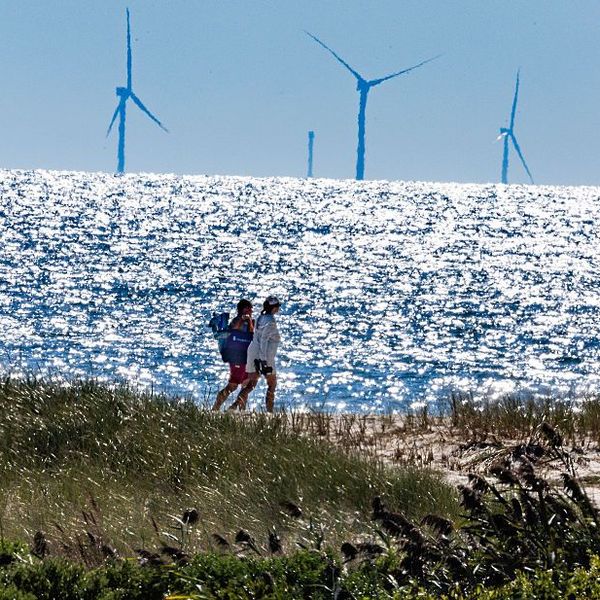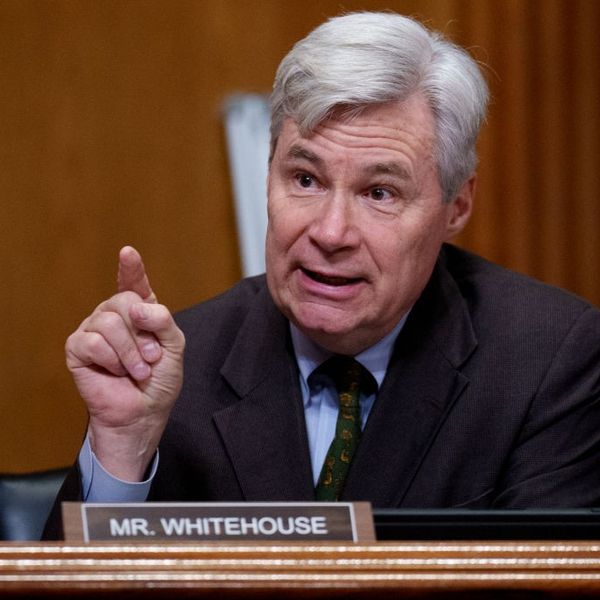China Leaves U.S. in Dust With $361 Billion Renewable Energy Investment
World's largest energy market looks to leave fossil fuels behind, while incoming Trump administration denies climate change and doubles down on dirty energy
While climate activists in the U.S. mount a resistance to the incoming climate-change-denying Trump administration, on the other side of the Pacific, environmentalists have reason to celebrate: China on Thursday announced that it will invest $361 billion in renewable energy by 2020.
Reuters reports:
The investment will create over 13 million jobs in the sector, the National Energy Administration (NEA) said in a blueprint document that lays out its plan to develop the nation's energy sector during the five-year 2016 to 2020 period.
The NEA said installed renewable power capacity including wind, hydro, solar, and nuclear power will contribute to about half of new electricity generation by 2020.
The move is the country's latest in its ongoing effort to kick a deadly coal addiction. Currently the world's worst greenhouse gas emitter as a result of its reliance on coal, China has also struggled with dangerous levels of smog in its largest cities:
\u201cBeijing from the air as smog blankets the city. Just otherworldly - and alarming\u201d— Jim Sciutto (@Jim Sciutto) 1483539545
Yet the country is making progress.
In 2016, China's solar industry ballooned--leading to an 80 percent drop in global prices. A Chinese wind energy company also produced more energy than the American company General Electric--the world's former leader--in early 2016.
"China as a whole already has the world's largest installation of turbines, and growth in wind power can be attributed, at least in part, to the Chinese government's so-called 'war on pollution,' which has shuttered coal-burning power plants near cities," observed Mother Jones' James West at the time.
Renewable industry leaders in China have also championed a plan for a global renewable energy grid, which is already garnering support from neighboring countries and the United Nations.
And the country is on track to peak and then taper its greenhouse gas emissions by 2025, notes West, five years ahead of the date promised in a 2014 U.S.-China treaty.
Meanwhile, president-elect Donald Trump appears prepared to ignore economic realities and scientific research and to strip environmental regulations and double-down on coal and other dirty fuels--all while railing against solar and wind.
An Urgent Message From Our Co-Founder
Dear Common Dreams reader, The U.S. is on a fast track to authoritarianism like nothing I've ever seen. Meanwhile, corporate news outlets are utterly capitulating to Trump, twisting their coverage to avoid drawing his ire while lining up to stuff cash in his pockets. That's why I believe that Common Dreams is doing the best and most consequential reporting that we've ever done. Our small but mighty team is a progressive reporting powerhouse, covering the news every day that the corporate media never will. Our mission has always been simple: To inform. To inspire. And to ignite change for the common good. Now here's the key piece that I want all our readers to understand: None of this would be possible without your financial support. That's not just some fundraising cliche. It's the absolute and literal truth. We don't accept corporate advertising and never will. We don't have a paywall because we don't think people should be blocked from critical news based on their ability to pay. Everything we do is funded by the donations of readers like you. Will you donate now to help power the nonprofit, independent reporting of Common Dreams? Thank you for being a vital member of our community. Together, we can keep independent journalism alive when it’s needed most. - Craig Brown, Co-founder |
While climate activists in the U.S. mount a resistance to the incoming climate-change-denying Trump administration, on the other side of the Pacific, environmentalists have reason to celebrate: China on Thursday announced that it will invest $361 billion in renewable energy by 2020.
Reuters reports:
The investment will create over 13 million jobs in the sector, the National Energy Administration (NEA) said in a blueprint document that lays out its plan to develop the nation's energy sector during the five-year 2016 to 2020 period.
The NEA said installed renewable power capacity including wind, hydro, solar, and nuclear power will contribute to about half of new electricity generation by 2020.
The move is the country's latest in its ongoing effort to kick a deadly coal addiction. Currently the world's worst greenhouse gas emitter as a result of its reliance on coal, China has also struggled with dangerous levels of smog in its largest cities:
\u201cBeijing from the air as smog blankets the city. Just otherworldly - and alarming\u201d— Jim Sciutto (@Jim Sciutto) 1483539545
Yet the country is making progress.
In 2016, China's solar industry ballooned--leading to an 80 percent drop in global prices. A Chinese wind energy company also produced more energy than the American company General Electric--the world's former leader--in early 2016.
"China as a whole already has the world's largest installation of turbines, and growth in wind power can be attributed, at least in part, to the Chinese government's so-called 'war on pollution,' which has shuttered coal-burning power plants near cities," observed Mother Jones' James West at the time.
Renewable industry leaders in China have also championed a plan for a global renewable energy grid, which is already garnering support from neighboring countries and the United Nations.
And the country is on track to peak and then taper its greenhouse gas emissions by 2025, notes West, five years ahead of the date promised in a 2014 U.S.-China treaty.
Meanwhile, president-elect Donald Trump appears prepared to ignore economic realities and scientific research and to strip environmental regulations and double-down on coal and other dirty fuels--all while railing against solar and wind.
While climate activists in the U.S. mount a resistance to the incoming climate-change-denying Trump administration, on the other side of the Pacific, environmentalists have reason to celebrate: China on Thursday announced that it will invest $361 billion in renewable energy by 2020.
Reuters reports:
The investment will create over 13 million jobs in the sector, the National Energy Administration (NEA) said in a blueprint document that lays out its plan to develop the nation's energy sector during the five-year 2016 to 2020 period.
The NEA said installed renewable power capacity including wind, hydro, solar, and nuclear power will contribute to about half of new electricity generation by 2020.
The move is the country's latest in its ongoing effort to kick a deadly coal addiction. Currently the world's worst greenhouse gas emitter as a result of its reliance on coal, China has also struggled with dangerous levels of smog in its largest cities:
\u201cBeijing from the air as smog blankets the city. Just otherworldly - and alarming\u201d— Jim Sciutto (@Jim Sciutto) 1483539545
Yet the country is making progress.
In 2016, China's solar industry ballooned--leading to an 80 percent drop in global prices. A Chinese wind energy company also produced more energy than the American company General Electric--the world's former leader--in early 2016.
"China as a whole already has the world's largest installation of turbines, and growth in wind power can be attributed, at least in part, to the Chinese government's so-called 'war on pollution,' which has shuttered coal-burning power plants near cities," observed Mother Jones' James West at the time.
Renewable industry leaders in China have also championed a plan for a global renewable energy grid, which is already garnering support from neighboring countries and the United Nations.
And the country is on track to peak and then taper its greenhouse gas emissions by 2025, notes West, five years ahead of the date promised in a 2014 U.S.-China treaty.
Meanwhile, president-elect Donald Trump appears prepared to ignore economic realities and scientific research and to strip environmental regulations and double-down on coal and other dirty fuels--all while railing against solar and wind.

